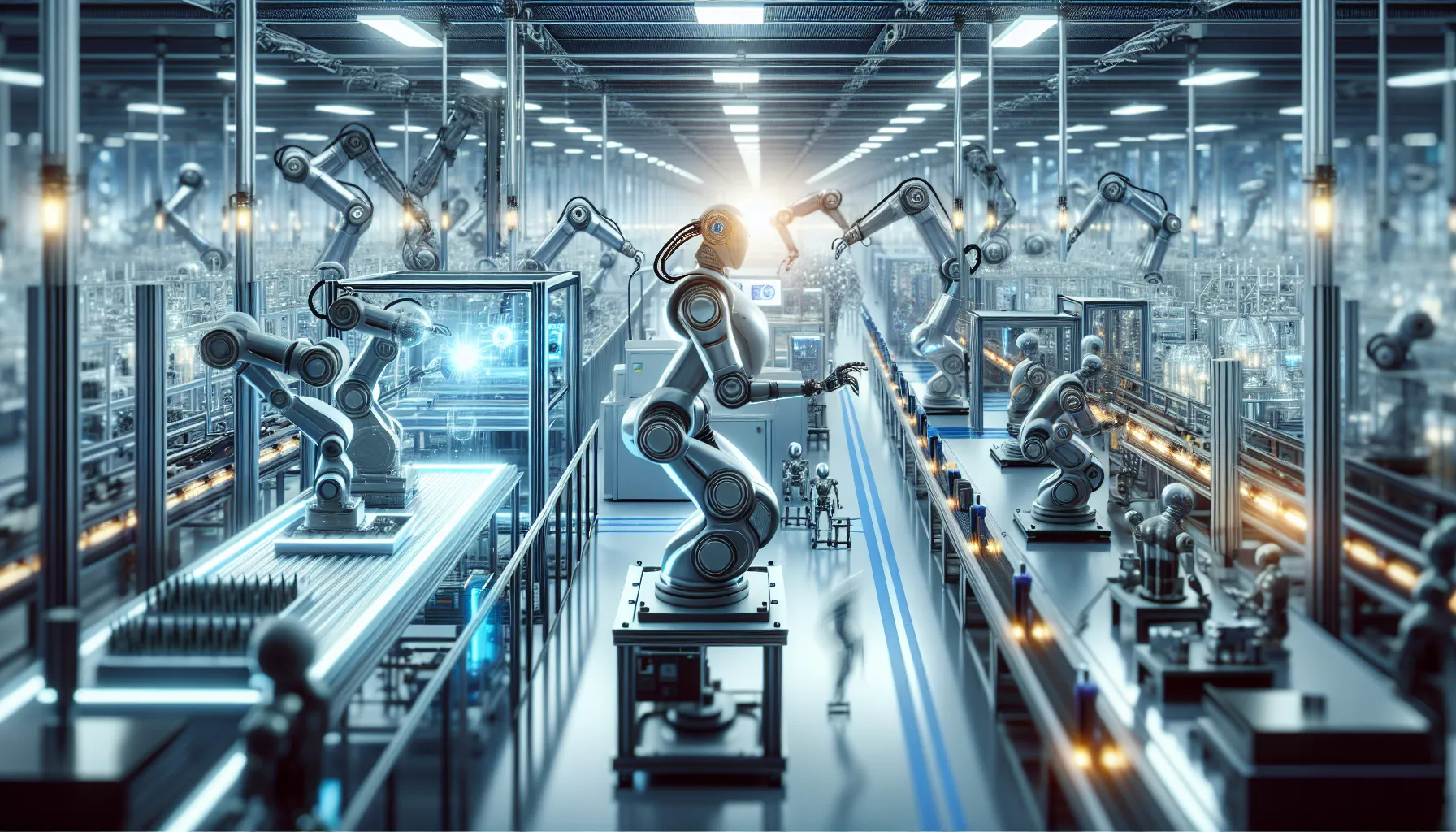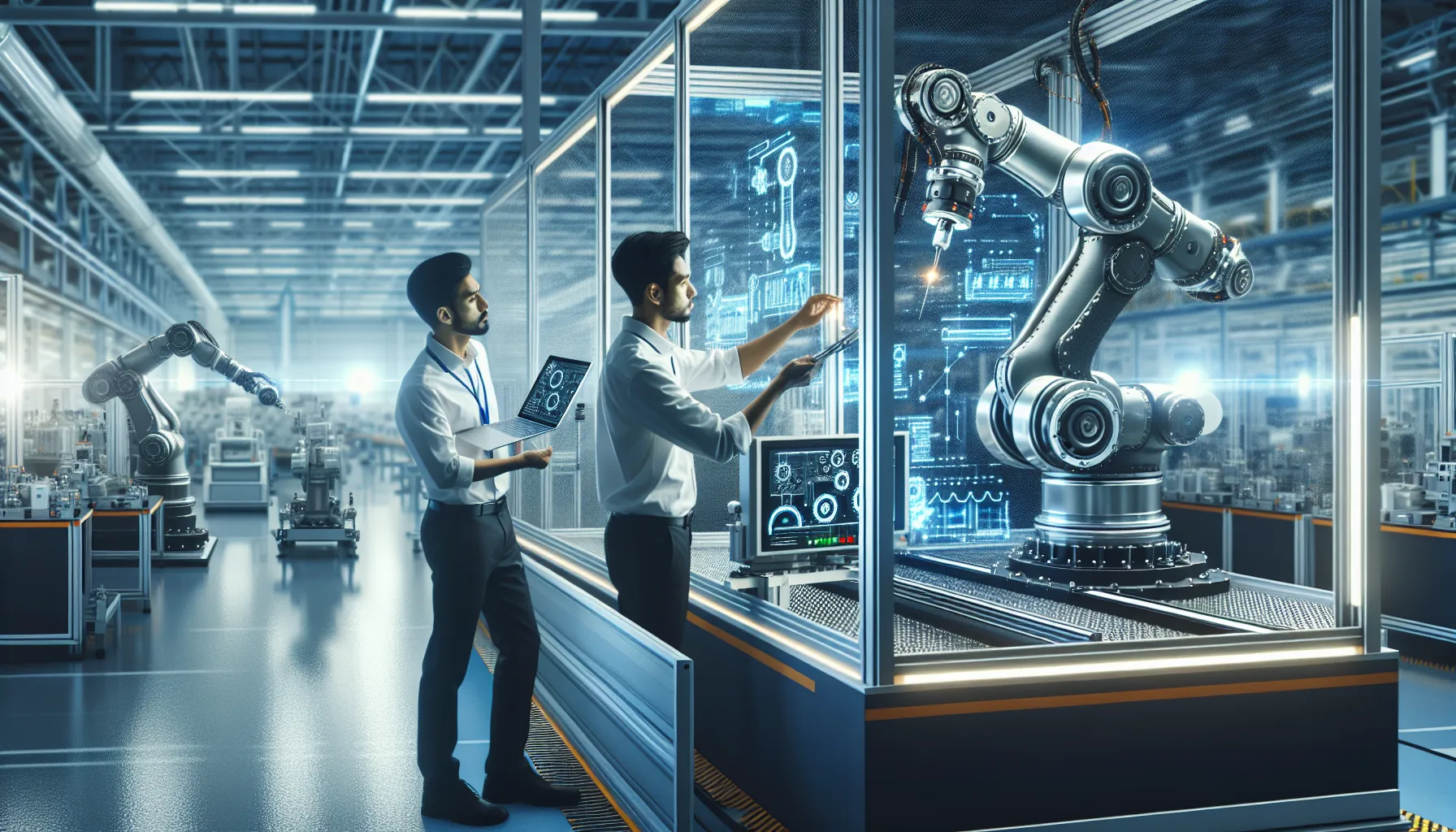Are you preparing for the IELTS Reading test and looking to improve your skills? In this article, we’ll explore a practice test focused on the topic of “How automation is reducing errors.” This comprehensive guide will provide you with a full IELTS Reading test, including three passages of increasing difficulty, along with a variety of question types and answer keys. Let’s dive in and enhance your reading comprehension skills while learning about the fascinating world of automation!
Table Of Contents
- Passage 1 (Easy Text): The Rise of Automation in Error Reduction
- Questions 1-5
- Questions 6-10
- Passage 2 (Medium Text): Automation in Quality Assurance and Testing
- Questions 11-14
- Questions 15-20
- Passage 3 (Hard Text): The Synergy of Human Expertise and Automation in Error Reduction
- Questions 21-26
- Questions 27-30
- Questions 31-35
- Answer Key
- Passage 1
- Passage 2
- Passage 3
Passage 1 (Easy Text): The Rise of Automation in Error Reduction
Automation has become an integral part of modern industries, revolutionizing the way we work and produce goods. One of the most significant benefits of automation is its ability to reduce errors in various processes. From manufacturing to data entry, automated systems are proving to be more accurate and consistent than their human counterparts.
In the manufacturing sector, for instance, robotics and automated assembly lines have dramatically decreased the occurrence of product defects. These machines can perform repetitive tasks with incredible precision, eliminating the fatigue and concentration lapses that often lead to human errors. Moreover, automated quality control systems use advanced sensors and computer vision to detect even the tiniest imperfections that might escape the human eye.
The impact of automation on error reduction extends beyond the factory floor. In the realm of data management, automated systems are minimizing discrepancies in record-keeping and financial transactions. Banks and financial institutions now rely heavily on automated processes to handle millions of transactions daily, significantly reducing the risk of human error in calculations and data entry.
Healthcare is another sector benefiting from automation’s error-reducing capabilities. Automated medication dispensing systems in hospitals have greatly diminished the likelihood of incorrect dosages or wrong medications being administered to patients. These systems use barcode scanning and computerized physician order entry (CPOE) to ensure that the right patient receives the right medication at the right time.
As we continue to advance technologically, the role of automation in reducing errors is likely to expand even further. While some may worry about job displacement, it’s important to recognize that automation often complements human skills rather than replacing them entirely. By taking over repetitive and error-prone tasks, automation allows human workers to focus on more complex, creative, and strategic aspects of their jobs.
 Automation in Factory
Automation in Factory
Questions 1-5
Do the following statements agree with the information given in the passage? Write
TRUE if the statement agrees with the information
FALSE if the statement contradicts the information
NOT GIVEN if there is no information on this
- Automation has reduced errors only in the manufacturing industry.
- Automated quality control systems can detect smaller defects than humans.
- Banks use automated systems to process a large number of transactions each day.
- Automated medication dispensing systems in hospitals use fingerprint recognition.
- The expansion of automation will completely eliminate the need for human workers in the future.
Questions 6-10
Complete the sentences below. Choose NO MORE THAN TWO WORDS from the passage for each answer.
- In manufacturing, ___ and automated assembly lines have significantly reduced product defects.
- Automated systems in data management help in ___ in record-keeping and financial transactions.
- In healthcare, automated systems use barcode scanning and ___ to ensure correct medication administration.
- By handling repetitive tasks, automation allows humans to focus on more ___ aspects of their jobs.
- Automation often ___ human skills rather than completely replacing them.
Passage 2 (Medium Text): Automation in Quality Assurance and Testing
The integration of automation in quality assurance and testing processes has led to a significant reduction in errors across various industries. This technological advancement has not only improved the accuracy of products and services but has also streamlined operations, resulting in increased efficiency and cost-effectiveness.
One of the primary areas where automation has made a substantial impact is in software testing. Traditional manual testing methods were often time-consuming and prone to human error, especially when dealing with large and complex software systems. Automated testing tools, however, can execute thousands of test cases in a matter of hours, ensuring comprehensive coverage and consistent results. These tools can simulate various user interactions and system loads, identifying bugs and performance issues that might be overlooked in manual testing.
The automotive industry has also embraced automation in its quality assurance processes. Automated inspection systems equipped with high-resolution cameras and machine learning algorithms can detect minute defects in vehicle components with remarkable accuracy. These systems can inspect hundreds of parts per minute, far surpassing the capabilities of human inspectors. Moreover, automated testing rigs can subject vehicles to rigorous performance and safety tests under controlled conditions, ensuring consistent and reliable results.
In the pharmaceutical sector, automation plays a crucial role in maintaining the highest standards of quality and safety. Automated laboratory systems can perform precise measurements and analyses, minimizing the risk of contamination and human error in drug development and production. Additionally, automated process control systems in manufacturing facilities ensure that each batch of medication meets strict quality standards, reducing the likelihood of product recalls and potential harm to patients.
The food and beverage industry has also benefited from automation in quality control. Automated vision systems can rapidly inspect packaged products for defects, ensuring proper sealing, labeling, and fill levels. These systems can detect foreign objects, verify product consistency, and even assess the freshness of perishable goods. By automating these processes, companies can significantly reduce the risk of contaminated or substandard products reaching consumers.
While the benefits of automation in quality assurance are clear, it’s important to note that human oversight remains crucial. Automation systems require proper setup, maintenance, and periodic validation to ensure their continued effectiveness. Furthermore, human expertise is essential in interpreting complex test results, making strategic decisions, and addressing unique or unforeseen quality issues that may arise.
As technology continues to advance, we can expect even more sophisticated automation solutions in quality assurance and testing. Artificial intelligence and machine learning are likely to play an increasingly important role, enabling predictive quality control and more adaptive testing processes. This ongoing evolution will further reduce errors, improve product quality, and enhance consumer safety across a wide range of industries.
Questions 11-14
Choose the correct letter, A, B, C, or D.
-
According to the passage, automated testing tools in software development:
A) Are less accurate than manual testing
B) Can only test simple software systems
C) Can perform more tests in less time than manual methods
D) Completely eliminate the need for human testers -
Automated inspection systems in the automotive industry:
A) Can only detect large defects in vehicle components
B) Are slower than human inspectors
C) Can inspect hundreds of parts per minute
D) Are not used for vehicle safety tests -
In the pharmaceutical sector, automated systems help to:
A) Develop new drugs faster
B) Reduce the need for quality standards
C) Minimize contamination risks in drug production
D) Increase the number of product recalls -
The food and beverage industry uses automated vision systems to:
A) Cook food products
B) Design new packaging
C) Inspect products for various defects
D) Replace all human workers in quality control
Questions 15-20
Complete the summary below. Choose NO MORE THAN TWO WORDS from the passage for each answer.
Automation has significantly improved quality assurance and testing processes across various industries. In software testing, automated tools can execute numerous (15) quickly and consistently. The automotive industry uses (16) with cameras and advanced algorithms to detect defects in vehicle parts. The pharmaceutical sector employs (17) for precise measurements and analyses in drug development. In food and beverage production, (18) inspect packaged products for defects and assess product freshness. Despite these advancements, (19) is still necessary for system maintenance and interpreting complex results. Future developments in automation are likely to incorporate (20) for more adaptive and predictive quality control processes.
Passage 3 (Hard Text): The Synergy of Human Expertise and Automation in Error Reduction
The integration of automation technologies in various industries has undeniably led to a significant reduction in errors, enhancing productivity and quality across the board. However, the narrative that automation alone is the panacea for error elimination is an oversimplification of a complex reality. In truth, the most effective error reduction strategies leverage the synergistic relationship between human expertise and automated systems, creating a symbiotic approach that capitalizes on the strengths of both.
One of the primary advantages of automation in error reduction is its ability to perform repetitive tasks with unwavering consistency. Unlike humans, machines do not suffer from fatigue, distraction, or emotional fluctuations that can lead to mistakes. This is particularly evident in manufacturing environments, where robotic assembly lines can maintain precision over extended periods, dramatically reducing defects in production. Similarly, in data-intensive fields such as finance and healthcare, automated systems can process vast amounts of information with a level of accuracy that would be virtually impossible for humans to match consistently.
However, the infallibility of automated systems is a myth that needs dispelling. Automation, while highly efficient, is not immune to errors. These can arise from various sources, including algorithmic biases, software bugs, or sensor malfunctions. Moreover, automated systems are designed and programmed by humans, which means they can inadvertently incorporate human biases or misconceptions. This underscores the critical role of human oversight in the deployment and operation of automated systems.
 Human-Automation Collaboration
Human-Automation Collaboration
The concept of “human-in-the-loop” (HITL) has emerged as a crucial paradigm in maximizing the error-reduction potential of automation while mitigating its limitations. HITL systems integrate human judgment at key decision points within an automated process. This approach is particularly valuable in scenarios where contextual understanding, ethical considerations, or creative problem-solving are required – areas where human cognition still holds a significant advantage over machines.
In the field of medical diagnostics, for instance, artificial intelligence (AI) systems have demonstrated remarkable accuracy in analyzing medical images to detect diseases. However, the most effective implementations of these technologies involve collaboration between AI and human physicians. The AI can rapidly process and flag potential areas of concern in thousands of images, while the human expert provides the final interpretation, taking into account the patient’s full medical history and other contextual factors that the AI might not be programmed to consider.
Similarly, in the aviation industry, the cockpit represents a sophisticated example of human-automation synergy. Modern aircraft are equipped with highly advanced autopilot systems that can handle most aspects of flight. However, human pilots remain essential for making critical decisions, especially in unforeseen circumstances or emergencies that fall outside the parameters of the automated systems’ programming.
The financial sector offers another compelling illustration of this synergy. Automated trading algorithms can execute transactions at speeds and volumes unattainable by human traders, significantly reducing errors in order processing. However, human financial experts are crucial in developing trading strategies, interpreting market trends, and making high-level decisions about risk management and portfolio allocation.
As we continue to advance in automation technologies, the focus should not be on replacing human expertise but on augmenting it. This requires a shift in how we approach the design and implementation of automated systems. Instead of viewing automation as a means to eliminate human involvement, we should strive to create systems that enhance human capabilities, allowing for more efficient and accurate decision-making.
Education and training will play a pivotal role in this paradigm shift. As automation takes over routine tasks, the workforce will need to adapt, developing skills that complement automated systems. This includes cultivating critical thinking, creativity, and emotional intelligence – attributes that are uniquely human and essential for effective collaboration with automated systems.
In conclusion, while automation has indeed made significant strides in reducing errors across various domains, its true potential is realized when harmoniously integrated with human expertise. The future of error reduction lies not in the supremacy of machines over humans, or vice versa, but in their collaborative synergy. By embracing this approach, we can create systems that are not only more accurate and efficient but also more adaptable and resilient in the face of complex, real-world challenges.
Questions 21-26
Complete the sentences below. Choose NO MORE THAN TWO WORDS from the passage for each answer.
- Unlike humans, machines do not experience ___ or emotional fluctuations that can cause errors.
- Automated systems can have errors due to algorithmic biases, software bugs, or ___.
- The ___ concept integrates human judgment at key points in automated processes.
- In medical diagnostics, AI can quickly process images, while human experts provide the final ___.
- Modern aircraft have advanced ___ systems, but human pilots are still essential for critical decisions.
- In the financial sector, human experts are crucial for developing strategies and making decisions about ___.
Questions 27-30
Do the following statements agree with the claims of the writer in the passage? Write
YES if the statement agrees with the claims of the writer
NO if the statement contradicts the claims of the writer
NOT GIVEN if it is impossible to say what the writer thinks about this
- Automation alone is sufficient to eliminate all errors in industrial processes.
- Human biases can be unintentionally incorporated into automated systems.
- The aviation industry no longer requires human pilots due to advanced autopilot systems.
- The workforce will need to develop new skills to effectively work alongside automated systems.
Questions 31-35
Choose the correct letter, A, B, C, or D.
-
According to the passage, the most effective error reduction strategies:
A) Rely solely on automated systems
B) Depend entirely on human expertise
C) Combine human expertise with automation
D) Eliminate human involvement completely -
The “human-in-the-loop” concept is particularly valuable in situations requiring:
A) Repetitive tasks
B) High-speed calculations
C) Contextual understanding and ethical considerations
D) Elimination of human judgment -
In the medical field, the collaboration between AI and human physicians results in:
A) AI making all diagnostic decisions
B) Physicians being replaced by AI systems
C) AI processing images and physicians providing final interpretations
D) Reduced accuracy in diagnoses -
The passage suggests that the future focus of automation should be on:
A) Completely replacing human workers
B) Augmenting human capabilities
C) Developing fully autonomous systems
D) Reducing the need for human education -
The author’s conclusion about the future of error reduction emphasizes:
A) The superiority of machines over humans
B) The irrelevance of human skills in automated environments
C) The need for humans to compete with machines
D) The importance of collaboration between humans and automated systems
Answer Key
Passage 1
- FALSE
- TRUE
- TRUE
- NOT GIVEN
- FALSE
- robotics
- minimizing discrepancies
- computerized physician order entry
- complex
- complements
Passage 2
- C
- C
- C
- C
- test cases
- automated inspection systems
- automated laboratory systems
- automated vision systems
- human oversight
- artificial intelligence
Passage 3
- fatigue
- sensor malfunctions
- human-in-the-loop
- interpretation
- autopilot
- risk management
- NO
- YES
- NO
- YES
- C
- C
- C
- B
- D
By practicing with this IELTS Reading test on “How automation is reducing errors,” you’ve not only enhanced your reading comprehension skills but also gained valuable insights into the exciting world of automation and its impact on error reduction across various industries. Remember to apply the strategies you’ve learned here to other IELTS Reading practice tests and real exam situations.
For more IELTS preparation resources and practice materials, be sure to check out our other articles on related topics:
- How Automation is Reducing Waste in Industrial Production
- Automation Risks for Workforce
- Impact of Automation on Logistics
Keep practicing and stay focused on your IELTS goals. Good luck with your preparation!


